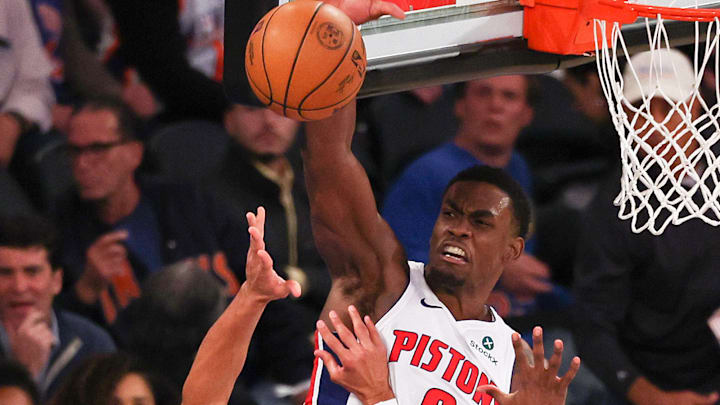The Detroit Pistons’ biggest strength last season was their defense. This should come as no surprise given their personnel and a head coach known for his defensive gameplans, but the importance of their defense may still be underrated. An interesting metric shows the value of good defensive possessions not only in getting stops, but also in kickstarting the offense.
Detroit Pistons: Turning Defense Into Offense
Originally posted by Lucas Burns (@nba.in_depth on Instagram) the metric shows how fast teams were to shoot after a defensive rebound vs after an opponent's made shot. The Pistons were the fourth-fastest team in the league in getting a shot off after a defensive rebound. Only the Grizzlies, Hawks and Raptors were faster getting down the court after a defensive rebound.
This isn’t really a surprising placement for the Pistons. They have elite athletes who can get down the court and finish in transition, such as Ausar Thompson and Jalen Duren. They also have an elite outlet passer in Cade Cunningham who sets those guys up beautifully. Even though they were missing him for most of the season, Jaden Ivey is also one of the fastest players in the league and can be a menace in transition.
What really stands out about the time to shoot metric is the other half of it: time to shoot after an opponent made shot. In that regard, the Pistons are squarely in the middle of the league, even a little slower than average. This shows that their halfcourt offense is comparatively methodical and deliberate.
I’ve discussed in depth how the Pistons can use different strategies to make their halfcourt offense more dynamic and catch defenses off guard, but I don’t want to make it seem like fast pace is the end all, be all. However, it is very glaring when a team has so much faster out of a transition offense vs halfcourt offense, even relative to the rest of the league.
The Pistons were top three in the league in percentage of points coming on the fastbreak last season, at 16 percent. Clearly, they thrive getting out before the defense is fully set, and maybe they would do well to create similar advantages after an opponent made shot too. We saw the Indiana Pacers have great success with outlet inbounds passes of opponent makes last season, and it often got them a bucket back almost immediately.
Of course the Pistons need to take steps to improve their halfcourt offense as well. It’s not realistic to think they can play the majority of the game in transition. But increasing the tempo even after an opponent makes a shot to create a sort of semi-transition can definitely be a good strategy for such a young and athletic team.
